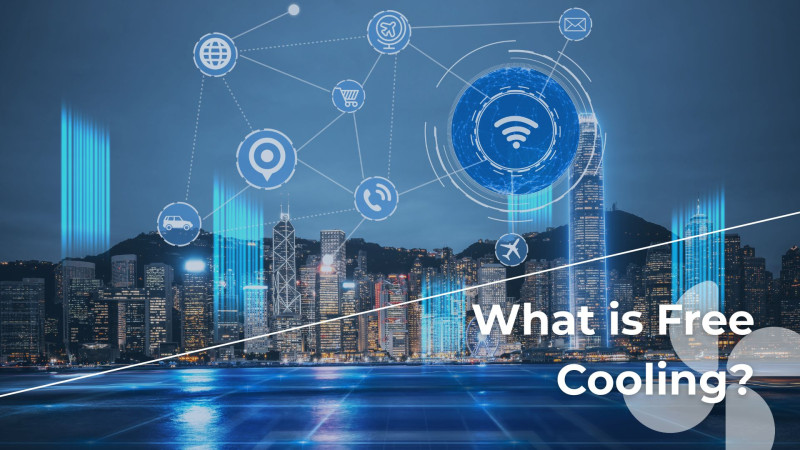Is Your Cooling Strategy Resilient Enough? Lessons from the AWS Outage
The October 2025 outage of Amazon Web Services (AWS) is a stark wake‑up call, not just for cloud architects, but for every organisation that relies on both digital and physical infrastructure. While much of the industry focuses on digital redundancy, it’s often forgotten that physical systems, particularly mission‑critical On‑Site cooling infrastructure, must be equally resilient. At Cooltherm, we believe that true infrastructure resilience spans both the cloud and the machine‐room.
In this article. we explore how to assess your cooling solution’s strength, what the outage reveals, and crucially how Cooltherm’s chiller service and maintenance offering provides the cooling solution resilience your data‑centres need. We’ll use core keywords like cooling solution resilience, medium‑volume supporting keywords such as critical cooling infrastructure and data centre cooling strategy, and long‑tail phrases like how to prevent cooling system failure during cloud outage or cooling solution backup plan for mission‑critical environments.
What happened in the AWS outage and why it matters for your cooling solution
On 20 October 2025, AWS suffered a major global disruption: increased error rates and latency across multiple services, particularly in its US‑EAST‑1 region. Popular apps and services, including banking functions in the UK, were knocked offline. This incident once again highlighted how a digital failure can ripple into physical systems.
Why the outage underscores the need for cooling solution resilience
- When cloud services falter, so can parts of your physical infrastructure stack, particularly if you rely on cloud‑connected building management, IoT sensors, remote monitoring dashboards, or vendor portals.
- If your critical cooling infrastructure is dependent on those external services, you introduce a hidden risk.
- Even though the root cause may be unknown, now is the time to ask: If the cloud layer goes down, does my cooling system continue to operate autonomously? If the answer is no, your data centre cooling strategy needs upgrading.
How to assess your cooling infrastructure’s vulnerability
Here’s a practical checklist to evaluate your cooling infrastructure through the lens of resilience.
Mapping dependencies
- Identify the components in your cooling architecture that rely on cloud or vendor portals (remote dashboards, IoT sensor feeds, vendor‑hosted analytics).
- Ask: What happens if connectivity is lost or the vendor cloud service is unavailable?
- Use this long‑tail keyword: cooling system redundancy when cloud fails.
Redundancy & fail‑safe review
- Confirm that your coolers, chillers, pumps and controls can operate locally, without cloud or remote oversight.
- Check whether you have backup power, redundant chillers, dual loops and manual override capability.
- These are critical elements of critical cooling infrastructure.
Incident scenario planning
- Simulate scenarios such as: “Cloud monitoring platform is unreachable”, “Remote alerting fails”, “Vendor portal unavailable”.
- Map cooling failure events to business outcomes, server shutdown, data‑loss and downtime.
- Use the phrase what to do when cloud services go down and your cooling depends on them.
By working through these steps you position your facility for greater resilience and sharpen your data centre cooling strategy.
Best practices to build a resilient cooling solution with Cooltherm
Here’s how Cooltherm advises building next‑level resilience for your data‑centre cooling systems—ensuring your cooling solution doesn’t become the weak link.
Local control & autonomy
Ensure your cooling infrastructure can operate independently of external cloud connectivity. Cooltherm’s service & maintenance contracts emphasise local control loops, on‑site logic, manual overrides and high‑availability setups. cooltherm.co.uk+1
Layered redundancy
Adopt multiple cooling loops, backup chillers/free‑cooling solutions, dual power feeds and segregated network paths. A robust cooling solution resilience strategy means there is no single point of failure.
Diverse monitoring & alerting pathways
Don’t rely solely on a cloud dashboard for alerts. Cooltherm offers 24/7 call‑out, local on‑site service engineers, and proactive maintenance rather than reactive fixes. cooltherm.co.uk
A strong cooling solution backup plan for mission‑critical environments includes remote alerts, SMS/telephony backup and on‑site local alarms.
Regular testing & exercises
Test how the cooling system behaves under failure conditions (e.g., cloud portal down). Confirm that the system continues running and that staff know the procedures.
This aligns with best practices cited in data‑centre cooling literature. Delta T Systems
What to do right now: immediate steps following the AWS‑style wake‑up call
If you’re pressed for time, here’s a quick action list to get started:
- Review all cloud‑connected components of your cooling system right away.
- Run a live test: simulate the monitoring dashboard disconnect or cloud service downtime and observe if your chillers keep running locally.
- Confirm that your local control panels remain accessible and staff know on‑site manual procedures.
- Check that you have 24/7 service support (e.g., Cooltherm’s call‑out cover). cooltherm.co.uk
- Review your vendor’s outage or dependency history on cloud services; map vendor risk to your infrastructure.
By stepping through this list, you reinforce your cooling solution resilience and sharpen your data centre cooling strategy for the unexpected.
Frequently Asked Questions (FAQ)
Q1: What is cooling solution resilience and why is it important?
A: Cooling solution resilience refers to your cooling infrastructure’s ability to maintain operations when external services fail, when cloud connectivity is lost, or when systems you rely on become degraded. For data‑centres, where servers generate massive heat loads, a cooling failure can result in forced shutdowns. Ensuring resilience means your servers stay cool and your business keeps running.
Q2: How does a cloud outage like AWS’s affect my cooling infrastructure?
A: Although a cloud outage might seem purely digital, many cooling systems now rely on cloud‑based monitoring, vendor portals and IoT sensors. If connectivity fails, remote monitoring, alerts and even vendor diagnostics might be unavailable. If you lack local autonomy in your cooling system, your critical cooling infrastructure might go blind and that’s when things break.
Q3: What immediate steps can I take to prevent cooling solution failure during an outage?
A: Begin with reviewing dependencies, test autonomy, ensure local control systems are functioning. Engaging a trusted partner like Cooltherm for service & maintenance ensures your chillers are inspected, troubleshot and supported 24/7—reducing risk. This is your cooling solution backup plan for mission‑critical environments.
Q4: What are the components of a robust data centre cooling strategy?
A: A robust strategy includes: redundancy (chillers/loops/power), autonomy (local controls), diverse alerting and monitoring, vendor and cloud readiness audits, and frequent testing. These combine to produce effective critical cooling infrastructure.
Q5: How can Cooltherm help build resilient critical cooling infrastructure?
A: Cooltherm specialises in the design, supply, installation, service and maintenance of high‑performance chillers, AHUs and air‑conditioning systems tailored for data centres. We offer nationwide 24/7 call‑out, full UK coverage and tailored Service & Maintenance contracts to keep equipment running at peak efficiency.
By engaging Cooltherm, you are effectively partnering with an industry leader to ensure your cooling solution doesn’t become your weak link.
The AWS outage of 2025 is more than a cloud‑services story, it’s a wake‑up call for all organisations to ensure that their cooling infrastructure is built for the unexpected. Your cooling stack must be resilient, autonomous, tested, and free of hidden dependencies that could turn a cloud disruption into a physical shutdown.
At Cooltherm, we’re ready to partner with you. With our expert chiller service & maintenance offerings, tailored contracts for critical infrastructure, and 24/7 support, you can strengthen your cooling strategy and safeguard your operations.
Don’t let your cooling solution be the weak link.
Contact Cooltherm today for a complimentary site review and discover how you can build a resilient cooling solution that aligns with your mission‑critical needs.
📩 enquiries@cooltherm.co.uk | ☎️ 01179 610006
Related News

Advances in High-Performance Cooling for Data Centres: Liquid Systems, Temperature Chaining and Intelligent Control

Modern Cooling Systems for UK Manufacturing: Smarter, Greener, and More Cost-Efficient
